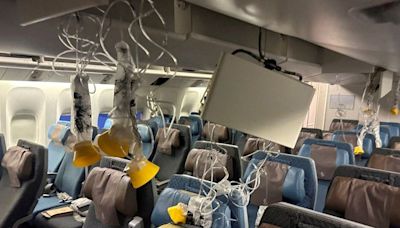Search results
In fluid dynamics, turbulence or turbulent flow is fluid motion characterized by chaotic changes in pressure and flow velocity. It is in contrast to a laminar flow, which occurs when a fluid flows in parallel layers, with no disruption between those layers. [1]
Mar 3, 2023 · What is turbulence? The definition of turbulence is fairly straightforward: chaotic and capricious eddies of air, disturbed from a calmer state by various forces. If you’ve ever...
4 days ago · What is turbulence? Turbulence is unstable air movement that is caused by changes in wind speed and direction, such as jet streams, thunderstorms, and cold or warm weather fronts. It can...
The meaning of TURBULENCE is the quality or state of being turbulent. How to use turbulence in a sentence.
May 21, 2024 · 21 May 2024. One person has died and several have been injured after severe turbulence on a London to Singapore flight. The plane suffered a sudden drop which launched people and objects across...
May 22, 2024 · turbulence, In fluid mechanics, a flow condition ( see turbulent flow) in which local speed and pressure change unpredictably as an average flow is maintained. Common examples are wind and water swirling around obstructions, or fast flow ( Reynolds number greater than 2,100) of any sort.
TURBULENCE definition: 1. a state of confusion without any order: 2. strong sudden movements within air or water: 3. a…. Learn more.
Turbulence is an irregular motion of the air resulting from eddies and vertical currents. It may be as insignificant as a few annoying bumps or severe enough to momentarily throw an airplane out of control or to cause structural damage. Turbulence is associated with fronts, wind shear, thunderstorms, etc.
TURBULENCE meaning: 1. a state of confusion without any order: 2. strong sudden movements within air or water: 3. a…. Learn more.
Jan 29, 2022 · Indeed, the reason for this complexity is a gradual development of very intricate, timedependent fluid patterns, called turbulence, rich with vortices - for example, see Figure 16. These vortices are especially pronounced in the region behind the moving body (the so-called wake), while the region before the body remains almost unperturbed.





